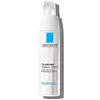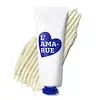What's inside
What's inside
 Key Ingredients
Key Ingredients

 Benefits
Benefits

 Concerns
Concerns

 Ingredients Side-by-side
Ingredients Side-by-side

Water
Skin ConditioningIsocetyl Stearate
EmollientSqualane
EmollientButyrospermum Parkii Butter
Skin ConditioningDimethicone
EmollientGlycerin
HumectantZea Mays Starch
AbsorbentPentylene Glycol
Skin ConditioningButylene Glycol
HumectantGlyceryl Stearate
EmollientPEG-100 Stearate
Cetyl Alcohol
EmollientSalvia Miltiorrhiza Root Extract
Skin ConditioningDimethiconol
EmollientSodium Hydroxide
BufferingSphingomonas Ferment Extract
Skin ConditioningCaprylyl Glycol
EmollientCitric Acid
BufferingAcetyl Dipeptide-1 Cetyl Ester
Skin ConditioningAcrylates/C10-30 Alkyl Acrylate Crosspolymer
Emulsion StabilisingWater, Isocetyl Stearate, Squalane, Butyrospermum Parkii Butter, Dimethicone, Glycerin, Zea Mays Starch, Pentylene Glycol, Butylene Glycol, Glyceryl Stearate, PEG-100 Stearate, Cetyl Alcohol, Salvia Miltiorrhiza Root Extract, Dimethiconol, Sodium Hydroxide, Sphingomonas Ferment Extract, Caprylyl Glycol, Citric Acid, Acetyl Dipeptide-1 Cetyl Ester, Acrylates/C10-30 Alkyl Acrylate Crosspolymer
Water
Skin ConditioningCocos Nucifera Oil
MaskingPetrolatum
EmollientRubus Idaeus Seed Oil
EmollientRosmarinus Officinalis Leaf Extract
AntimicrobialLactobacillus
Skin ConditioningCetearyl Alcohol
EmollientCetearyl Glucoside
EmulsifyingCetyl Alcohol
EmollientGlyceryl Stearate
EmollientDiheptyl Succinate
EmollientCapryloyl Glycerin/Sebacic Acid Copolymer
Skin ConditioningSqualane
EmollientAesculus Hippocastanum Seed Extract
Skin ConditioningPrunus Amygdalus Dulcis Oil
Skin ConditioningCaprylhydroxamic Acid
Lecithin
EmollientStearyl Palmitate
EmulsifyingDiindolylmethane
Sodium Ascorbyl Phosphate
AntioxidantSodium Hyaluronate
HumectantXanthan Gum
EmulsifyingTocopheryl Acetate
AntioxidantTetrahydropiperine
Skin ConditioningWater, Cocos Nucifera Oil, Petrolatum, Rubus Idaeus Seed Oil, Rosmarinus Officinalis Leaf Extract, Lactobacillus, Cetearyl Alcohol, Cetearyl Glucoside, Cetyl Alcohol, Glyceryl Stearate, Diheptyl Succinate, Capryloyl Glycerin/Sebacic Acid Copolymer, Squalane, Aesculus Hippocastanum Seed Extract, Prunus Amygdalus Dulcis Oil, Caprylhydroxamic Acid, Lecithin, Stearyl Palmitate, Diindolylmethane, Sodium Ascorbyl Phosphate, Sodium Hyaluronate, Xanthan Gum, Tocopheryl Acetate, Tetrahydropiperine
 Reviews
Reviews

Ingredients Explained
These ingredients are found in both products.
Ingredients higher up in an ingredient list are typically present in a larger amount.
Cetyl Alcohol is a fatty alcohol. Fatty Alcohols are most often used as an emollient or to thicken a product.
Its main roles are:
Though it has "alcohol" in the name, it is not related to denatured alcohol or ethyl alcohol.
The FDA allows products labeled "alcohol-free" to have fatty alcohols.
Learn more about Cetyl AlcoholGlyceryl Stearate is a mix of glycerin and stearic acid.
It is used to stabilize the mixing of water and oil ingredients. By preventing these ingredients from separating, it can help elongate shelf life. It can also help thicken the product's texture.
As an emollient, it helps soften skin and supports barrier-replenishing ingredients.
In cosmetics, Glyceryl Stearate is often made from vegetable oils or synthetically produced.
This ingredient may not be fungal-acne safe
Fun fact: The human body also creates Glyceryl Stearate naturally.
Learn more about Glyceryl StearateSqualane is an emollient that helps the skin hold onto moisture. It's an oily liquid that occurs naturally in certain types of fish and plant oils.
Because squalane boosts hydration in the skin, it also comes with plenty of benefits: it is an antioxidant and can help fight free radicals and skin damage. Squalane is also found to have a detoxifying effect when applied.
Squalane comes from squalene, which occurs naturally within the sebum of our skin. It is one of the oils our skin produces to keep itself hydrated. Squalane is the hydrogenated version of squalene and has a longer shelf life.
Research shows that squalane is non-irritating (even at 100% concentration).
In general, it's a fantastic ingredient. It does a great job at hydrating the skin, and it's suitable for those with sensitive skin.
The source of squalane may impact malassezia / fungal acne. This is because olive oil derived squalane can contain impurities such as fatty acids and plant waxes. Sugarcane derived squalane is recommended for anyone with malassezia concerns.
Is squalane vegan?
This depends on the source. Squalane can be derived from both plants and animals. Most squalane used in skincare comes from plants.
Please note: the source of squalane is only known if disclosed by the brand. We recommend reaching out to the brand if you have any questions about their squalane.
Read more about squalene with an "e".
Is squalane an oil?
Squalane is often called an oil, but it’s technically not; it’s a hydrocarbon, meaning it’s only made of carbon and hydrogen, unlike true oils which are triglycerides made of fatty acids and glycerol.
The term “oil-free” isn’t regulated, so companies can define it however they want. Some exclude all oils, while others just avoid mineral oil or comedogenic oils.
While some people avoid oils thinking they cause breakouts, the right kind of oil (or oil-like ingredient like squalane) can actually help balance and hydrate your skin. It’s worth testing out simple oils or squalane to see what works best for your skin.
Learn more about SqualaneWater. It's the most common cosmetic ingredient of all. You'll usually see it at the top of ingredient lists, meaning that it makes up the largest part of the product.
So why is it so popular? Water most often acts as a solvent - this means that it helps dissolve other ingredients into the formulation.
You'll also recognize water as that liquid we all need to stay alive. If you see this, drink a glass of water. Stay hydrated!
Learn more about Water